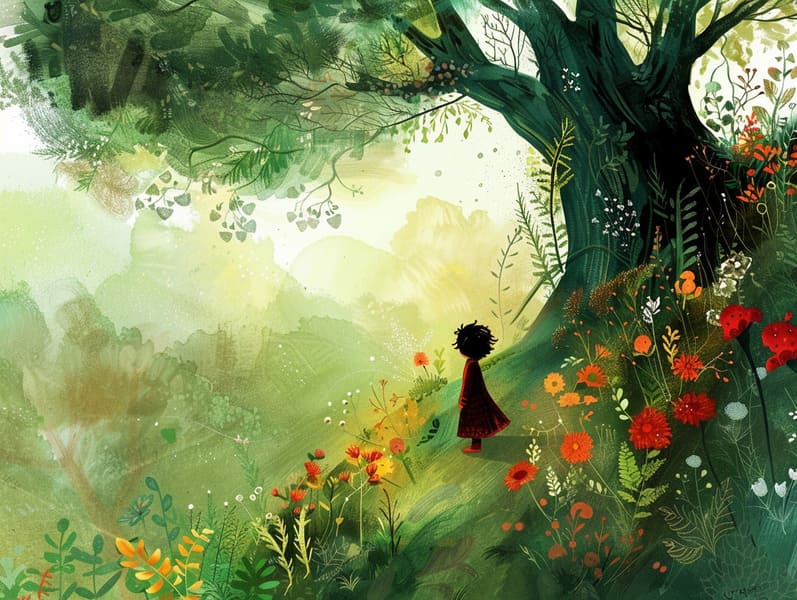Tracing the Heritage of Famous Fairy Tales with the Consistent Grandeur.
Tracing the Heritage of Famous Fairy Tales with the Consistent Grandeur.
Blog Article

Best fairy tales have old origins. These tales have been whispered from one generation to the next centuries before they were ever recorded. They arose from a variety of societies, including Indigenous traditions. They were initially narrated among elders, often carrying themes and messages reflective of the societal norms and beliefs of the time.
The Brothers Grimm, Jacob and Wilhelm, were among the first to collect many of these beloved stories. Their compilation, "Grimm's Story Collection," included stories like "The True Bride," "Little Brother and Little Sister," and "Snow-White and Rose-Red," which have since become pillars in the world of timeless fairy tales. Similarly, Andersen's delightful tales, such as "The Mermaid," and "The Duckling's Story," have captured hearts worldwide, establishing their place in the pantheon of timeless fairy tales.
Though they are centuries old, classic fairy tales remain as relevant as ever, especially as nighttime stories for kids. These whimsical stories are now available in multiple formats, including beautifully illustrated books, enchanting animations, and online storybooks.
Their ongoing significance can be ascribed to several fascinating points:
Significant Morals: Timeless fairy tales often illustrate important moral lessons. Fairy tales like "The Shepherd Boy and the Wolf" teach the benefit of truthfulness, while "The Story of the Tortoise and the Hare" stress the values of tenacity and humility. These stories offer little ones clear distinctions between virtue and vice, forming their moral compass in a subtle yet meaningful way.
Kindness and Comprehension: Old fairy tales frequently present personalities facing struggles and tests, fostering young readers to feel with their struggles and celebrate their triumphs. For instance, "The Story of Beauty and the Beast" highlights the merit of looking past the exterior to perceive the inner core of a character, cultivating tenderness and insight.
Cultural Understanding: Many traditional fairy tales are imbued with the cultural contexts from which they blossomed. Reading these stories can provide enlightening views into different heritages, advancing a sense of world appreciation and recognition.
Creativity and Imagination: The fantasy-filled elements in fairy tales—enchanted lands—invigorate children’s dreaming abilities. These stories bring readers to fantastical realms, fostering imaginative dreams and a sense of mystery that remains a lifetime.
Ancient fairy tales are not only alluring but also instructive. They serve as bewitching tools in enhancing various cognitive and affective skills in young readers. When timeless fairy tales are narrated, they develop linguistic abilities by showing new language and detailed sentence structures. This practice also boosts listening abilities and mindfulness, as young readers follow the story, enthusiastic to see what happens next.
Furthermore, analyzing the themes and characters of old fairy tales can nurture evaluative skills and reasoning skills. Kids are instructed to notice patterns, anticipate outcomes, and comprehend cause and effect. These contemplations also aid little ones voice their thoughts and feelings, contributing to their emotional intelligence.
In today’s modern era, the abundance of free fairy tales online has made these tales more accessible than ever. Digital sites and online apps share comprehensive collections of bedtime fairy tales that can be perused or listened on anytime, anywhere. Fairy tales recited are particularly favored, extending an engaging way for the young to engage with these charming stories. Read-aloud stories and read-out-loud stories take characters and settings to life, often paired with bewitching background sounds and songs that enrich the storytelling experience.
The timeless allure find it here of classic fairy tales lies in their ability to change to changing times while staying true to their underlying messages. Contemporary retellings of these tales often spotlight more representative characters and modern settings, making them relatable to today’s audience. However, the fundamental themes of fearlessness, charity, and righteousness remain unchanged, continuing to impact readers of all ages.
Traditional fairy tales also offer a sense of coziness and familiarity. They distribute a structured narrative with a evident beginning, middle, and end, often ending with the settlement of conflicts and the triumph of truth over falsehood. This steadiness can be soothing for kids, introducing a sense of sturdiness in an fluid world.
Timeless fairy tales continue to entrance and train new generations, maintaining their allure and importance in modern society. As bedtime stories for kids, they allow a perfect blend of wonder and wisdom, facilitating moral values, empathy, and creativity. The prevalence of digital fairy tales and the likability of fairy tales spoken affirm that these old narratives remain available to new generations.
By holding onto and conveying these narratives, we continue to commemorate the rich tapestry of fantasy and cultural heritage. Whether you are enjoying a richly illustrated book, delving into a digital collection, or playing an sound book, the splendor of popular fairy tales is always within reach. These narratives demonstrate of the consistent presence of stories and its ability to tie us across time and space.
Whether you are accessing a richly illustrated book, delving into a cyber collection, or listening through an spoken story, the loveliness of bedtime fairy tales is always within reach.
These narratives teach us of the steadfast effect of stories and its ability to tie us across centuries and lands, weaving a spell that fascinates and enlightens alike.